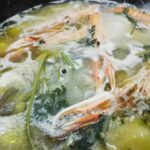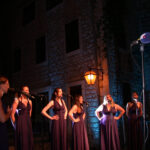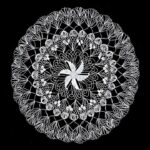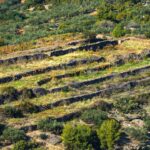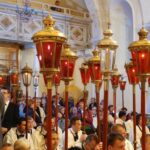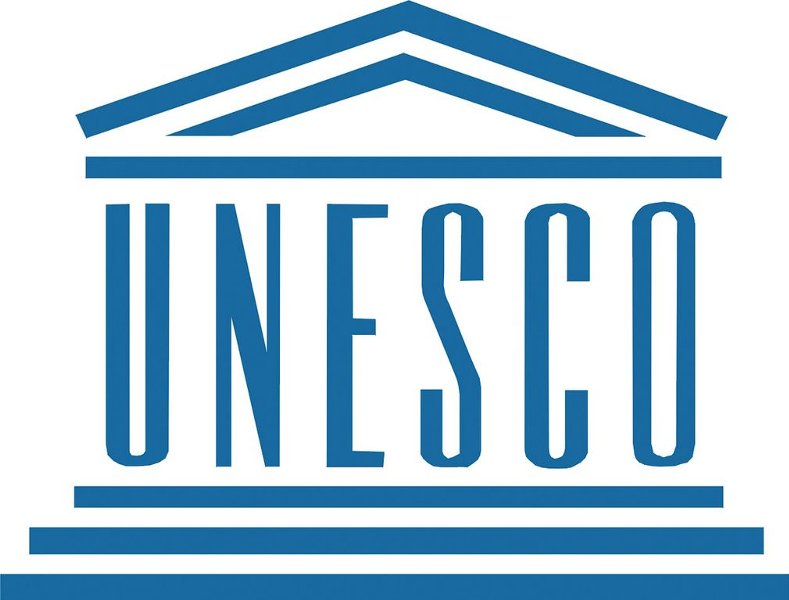
HVAR’S UNESCO LISTINGS
Hvar is proud to have no less than six of its cultural assets included in the UNESCO heritage lists. Stari Grad Plain is on the World Heritage List as a cultural landscape. The Za Križen Procession, Hvar’s Lacemaking, the Mediterranean Diet and Dry Stone Walling are all included on the Representative List of the Intangible Cultural Heritage of Humanity, with special reference to Hvar. One can also in fairness add a sixth cultural asset to Hvar’s role of honour: Klapa Multipart Singing, which is an age-old tradition on Hvar, is on the Representative List, but as it is widespread in Dalmatia it is not identified with any particular place.
The Stari Grad Plain
The Stari Grad Plain was inscribed as a World Heritage cultural landscape in 2008. The UNESCO description states why it is so special: ‘Stari Grad Plain on the Adriatic island of Hvar is a cultural landscape that has remained practically intact since it was first colonized by Ionian Greeks from Paros in the 4th century BC. The original agricultural activity of this fertile plain, mainly centring on grapes and olives, has been maintained since Greek times to the present. The site is also a natural reserve. The landscape features ancient stone walls and trims, or small stone shelters, and bears testimony to the ancient geometrical system of land division used by the ancient Greeks, the chora which has remained virtually intact over 24 centuries.’
The Plain is the largest fertile agricultural area on the Adriatic islands, and has provided food for generations of Hvar residents over at least the last 2,400 years, and probably for some time before the known history. There are settlements in the hills running through the central area of the island along the length of the plain. Their inhabitants have farmed the fields on the Plain and on the surrounding hillsides since time immemorial. The continuity of the farming tradition and the preservation of the original parcelization (divisions) of the fields are the main reasons why the Plain is historically and culturally significant.
The Greeks are known to have ventured up the east coast of the Adriatic in the first century BCE, for exploring and trading purposes. They settled on Hvar in 385 or 384 BCE, when colonisers from Paros in the Aegean Sea founded Pharos on the site of present-day Stari Grad. The fertile plain, known in Greek as the ‘chora’, was divided into equal plots measuring 180 m x 900 m, and allocated to the incomers. The pattern of these plots is still visible today, although with later subdivisions. Pharos was renamed Faria when the Romans arrived, and the ‘chora’ became the ‘ager’. Later on, the Croats renamed Faria Hvar. When the new town of Hvar was established on the west side of the island, the old town became Stari Hvar (Old Hvar), then later Stari Grad (Old Town), as it is today. The history of Stari Grad and its Plain demonstrates the firm link between culture and agriculture in the region: nations, civilizations, languages change by turns, from Illyrians to Greeks, to Romans, to Slavs / Neretvans / Croats.
‘Za križen’ – ‘Following the Cross’
The people’s Procession known as ‘Za Križen’ (‘Following the Cross’) has been taking place between six settlements on the Island of Hvar for some 500 years. The circular walk between Jelsa, Pitve, Vrisnik, Svirče, Vrbanj and Vrboska to honour the symbolic representations of Jesus’ tomb in each place takes the Cross-Bearer, his entourage and followers the whole night between Maundy Thursday and Good Friday. It is a deeply significant event, especially for the Cross-Bearer, who usually dedicates his efforts, sometimes as a personal vow, or in a charitable appeal for a good cause.
Local people follow the Cross-Bearer from their own settlement for all or part of the way, and they are often joined by outsiders from Croatia or abroad who are attracted by the religious sentiments underpinning the Procession. It is a moving experience, especially because of the gentle lights of the lanterns and votive candles carried by the Cross-Bearer’s entourage, and the age-old harmonies and prayers which are sung along the way and at each stop.
Each of the six processions has its own traditions, with slight variations in the route and the singing. Only the Jelsa Cross-Bearer runs the last few yards into Jelsa, the others simply walk in.
The custom was inscribed on the Representative List in 2009.
The UNESCO description: ‘After mass on Maundy Thursday before the Christian holiday of Easter, each of six villages on the Dalmatian island of Hvar in southern Croatia sends out a group that will proceed through the other villages in a circle, covering twenty-five kilometres in eight hours before returning home.
Each party in this community-organized Za Križen (‘following the cross’) procession is led by a cross-bearer who walks barefoot or in socks, never resting. The cross-bearer, formerly selected from among religious brotherhoods and today chosen by registration up to twenty years in advance, has a much-desired and respected position, reflecting the devotion of the individual bearer and his family. He is followed by two friends with candelabra and others carrying candles and lanterns, five choral singers who sing the Lamentation of the Virgin Mary at several points along the way, and many worshippers of all ages from Croatia and abroad wearing the tunics of religious brotherhoods.
The procession is greeted by the priests of each of the other five villages and returns home; the cross-bearer runs the last hundred metres to receive the blessing of his home priest. A long-established and inalienable part of Hvar religious and cultural identity, the procession connects the communities of the island to each other and to the world Catholic community.’
Hvar Lacemaking
Lacemaking using threads made from the agave plant is a special traditional skill practised by the Benedictine nuns in Hvar Town, and it is not done anywhere else in Croatia. It is not known when this skill started: according to some it dates back several hundred years, others think just a couple of hundred. The Benedictine nuns in Hvar state with certainty that their order has been making agave lace for some 130 years.
Apparently the Habsburg Empress Maria Theresa (1717 – 1780) ordered some of the lace as decoration for a child’s shirt. It is a great pity that a serious fire when Hvar was under Napoleonic rule destroyed the convent’s archives, which would certainly have held a record of the tradition.
Lace creations are tied together using a sewing needle and a thin netting needle. There are three basic categories for lace-making: in the ‘Tenerife technique’ a fine needle is used, stitching over a card base; ‘Tenerife netting’, with wrinkling in the circle, uses sewing needles and metal netting needles; the ‘antique’ technique, with wrinkling on the frame, uses sewing needles over diverse points on a fine mesh net stretched over a frame.
In the first two techniques work starts from the middle, while the ‘antique’ technique works the opposite way, starting from the edges and weaving towards the centre. This is extremely demanding work, as is the task of creating fine but strong thread from the agave leaves, which is particularly arduous. Larger lace pieces take five to six months to complete, and every one is unique, as they are not made to set patterns, which is one of the reasons why Hvar lace is so highly prized.
Hvar agave lace has been chosen three times as an appropriate gift for successive Popes, the first on one of Pope John Paul II’s visits to Split (he visited in 1998 and 2003), the second when Croatia’s Foreign Minister Gordan Jandroković visited Pope Benedict XVI in the Vatican in 2009, and the third when President Ivo Josipović gave agave lace to Pope Francis in 2013.
Alongside needlepoint lace from the Island of Pag, and bobbin lace from the northern Croatian town of Lepoglava, Hvar’s agave lace was honoured with inscription as ‘Lacemaking in Croatia’ on the Representative List in 2009.
The UNESCO description – note that there is an error in the plant name, the thread is not made from aloe but from agave (the error probably arose because in local dialect the two names are often interchanged!) : ‘At least three distinct traditions of Lacemaking in Croatia persist today, centred on the towns of Pag on the Adriatic, Lepoglava in northern Croatia and Hvar on the Dalmatian island of the same name. Pag needle-point lace was originally used to make ecclesiastical garments, tablecloths and ornaments for clothing.
The process involves embellishing a spider web pattern with geometrical motifs and is transmitted today by older women who offer year-long courses. Lepoglava bobbin lace is made by braiding thread wound on spindles, or bobbins; it is often used to make lace ribbons for folk costumes or is sold at village fairs. An International Lace Festival in Lepoglava celebrates the art every year. Aloe lace is made in Croatia only by Benedictine nuns in the town of Hvar. Thin, white threads are obtained from the core of fresh aloe leaves and woven into a net or other pattern on a cardboard background.
The resulting pieces are a symbol of Hvar. Each variety of lace has long been created by rural women as a source of additional income and has left a permanent mark on the culture of its region. The craft both produces an important component of traditional clothes and is itself testimony to a living cultural tradition.’
The Mediterranean Diet
The Mediterranean diet was inscribed on the Representative List in 2013, following a joint application from Cyprus, Croatia, Spain, Greece, Italy, Morocco and Portugal. Hvar and Brač were chosen as representative places in Croatia where the Mediterranean diet is still alive.
The UNESCO description: ‘The Mediterranean diet involves a set of skills, knowledge, rituals, symbols and traditions concerning crops, harvesting, fishing, animal husbandry, conservation, processing, cooking, and particularly the sharing and consumption of food. Eating together is the foundation of the cultural identity and continuity of communities throughout the Mediterranean basin.
It is a moment of social exchange and communication, an affirmation and renewal of family, group or community identity. The Mediterranean diet emphasizes values of hospitality, neighbourliness, intercultural dialogue and creativity, and a way of life guided by respect for diversity. It plays a vital role in cultural spaces, festivals and celebrations, bringing together people of all ages, conditions and social classes.
It includes the craftsmanship and production of traditional receptacles for the transport, preservation and consumption of food, including ceramic plates and glasses. Women play an important role in transmitting knowledge of the Mediterranean diet: they safeguard its techniques, respect seasonal rhythms and festive events, and transmit the values of the element to new generations. Markets also play a key role as spaces for cultivating and transmitting the Mediterranean diet during the daily practice of exchange, agreement and mutual respect.’
Dry Stone Walling
‘The Art of Dry Stone Walling, Knowledge and Techniques’ was inscribed in the Representative List in 2018, following a joint application from Croatia, Cyprus France, Greece, Italy, Slovenia, Spain and Switzerland. In the Nomination Document, Hvar was singled out as an example because of the dry stone walls in the Starigrad Plain, which was already inscribed on the World Heritage List.
The UNESCO description: ‘The art of dry stone walling concerns the knowhow related to making stone constructions by stacking stones upon each other, without using any other materials except sometimes dry soil. Dry stone structures are spread across most rural areas – mainly in steep terrains – both inside and outside inhabited spaces, though they are not unknown in urban areas. The stability of the structures is ensured through the careful selection and placement of the stones, and dry-stone structures have shaped numerous, diverse landscapes, forming various modes of dwelling, farming and husbandry.
Such structures testify to the methods and practices used by people from prehistory to today to organize their living and working space by optimizing local natural and human resources. They play a vital role in preventing landslides, floods and avalanches, and in combating erosion and desertification of the land, enhancing biodiversity and creating adequate microclimatic conditions for agriculture. The bearers and practitioners include the rural communities where the element is deeply rooted, as well as professionals in the construction business.
Dry stone structures are always made in perfect harmony with the environment and the technique exemplifies a harmonious relationship between human beings and nature. The practice is passed down primarily through practical application adapted to the particular conditions of each place.’
Dry stone walling can be described as ‘a lace picture in the environment’. Apart from the dry stone walls from the 4th century BCE in the Stari Grad Plain, there are many more on Hvar as elsewhere which cannot be dated, maybe going back only a century or so. All of them should be preserved and cherished as a reminder of the patient, careful labours of the islanders, as a way of building, living and cultivating the soil, and as part of the beauty adorning the environment.
Building dry stone walls is skilful construction in stone without the use of binding materials. Dry stone walling is really a cultural phenomenon, the mark on a place created by human toil, which also imbues a value in ecological, material and landscape terms.
Ownership of land plots was delineated with dry stone walls, often raised with the stones which had been removed by hand to free up little patches of soil for cultivation; dry stone walls created pens for livestock, provided terracing to prevent soil erosion, and lined the island’s paths. It has been said that the farming areas of our islands, coastal areas and hinterland are not just empty spaces: the landscape is marked by stone walls which, together with the villages, create a unique space for work and pleasure. The landscape with stone walling is part of our cultural identity, and a factor confirming that we belong in the Mediterranean cultural circle.
Klapa Multipart Singing
Klapa Multipart Singing of Dalmatia, Southern Croatia was added to the Representative List in 2012. The UNESCO description: ‘Klapa singing is a multipart singing tradition of the southern Croatian regions of Dalmatia. Multipart singing, a cappella homophonic singing, oral tradition and simple music making are its main features. The leader of each singing group is the first tenor, followed by several tenors, baritones and bass voices.
During performances, the singers stand in a tight semicircle. The first tenor starts the singing and is followed by the others. The main aim is to achieve the best possible blend of voices. Technically, klapa singers express their mood by means of open guttural, nasal sotto voce and falsetto singing, usually in high-pitched tessitura. Another feature is the ability to sing freely, without the help of notation. Topics of klapa songs usually deal with love, life situations, and the environment in which they live. Bearers and practitioners are skilled amateurs who inherit the tradition from their predecessors.
Their ages vary with many younger people singing with older singers. In ‘traditional klapa’, knowledge is transferred orally. ‘Festival klapa’ is more formally organized with a focus on performance and presentation. In ‘modern klapa’, young singers gain experience by attending performances and listening to recordings. Local communities see klapa singing as a central marker of their musical identity, incorporating respect for diversity, creativity and communication.’




